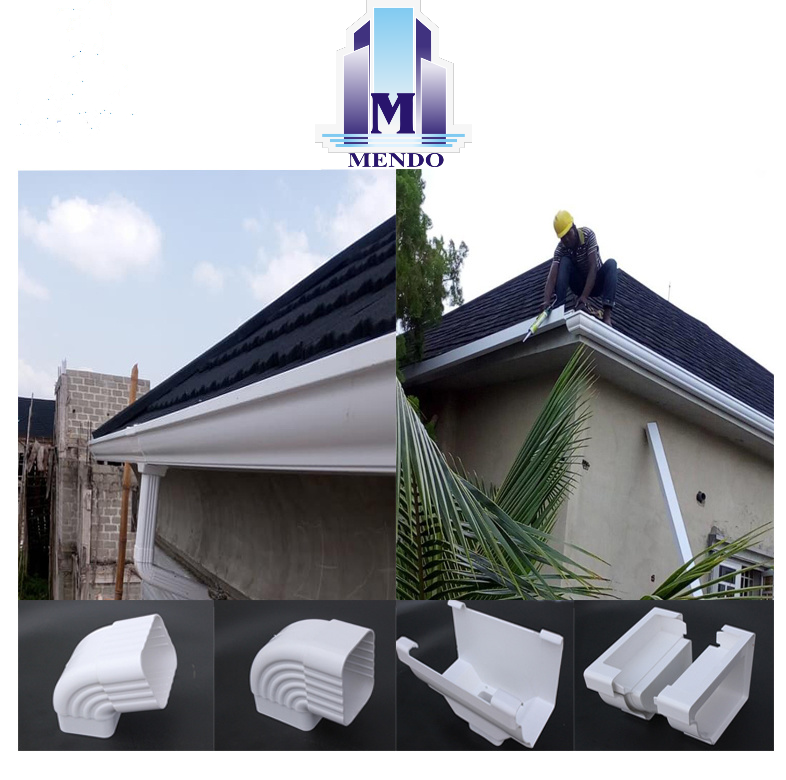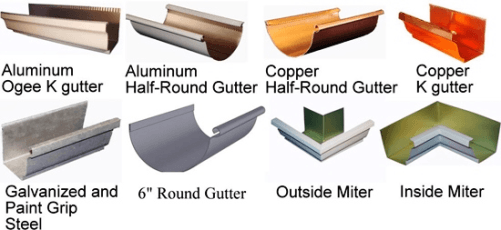5 THINGS TO CONSIDER WHILE SELECTING GUTTERS TO KEEP YOUR PROPERTY IN GOOD CONDITION
by mendo

Gutters aren’t normally the first thing you see when you arrive, but they’re not to be overlooked when it comes to house upkeep. Gutters drain precipitation and debris from the roof and into certain regions in the ground surrounding the structure to prevent mold, breakdown, and other risks to a house’s foundation. Here are five things you should know about picking gutters to keep your property in good condition.
The Materials
Determine the appropriate material for your style and your property. To minimize having to repair the damage caused by failing gutters, a good rule of thumb is to use the most durable material you can afford. For more of a budget material, vinyl is inexpensive but will break down over time, whereas aluminum is slightly more durable, won’t rust, and is the most popular option for a modest budget. Galvanized steel or copper will give you the most durability for the longest amount of time and also provide the best look. Galvanized steel or copper will provide the highest durability over the longest period of time while also providing the nicest appearance.
The Home Design
Following the selection of materials, whether traditional or more aesthetic, it is essential to be familiar with the design of your home’s gutters. Are they continuous or sectional? Half Round or K-Style? Downspouts play a role in this process as well, and a reasonable rule of thumb is to install one for every 40 feet of gutter. The design you pick must be appropriate for the slope of your roof, the form of your property, and the direction in which water and debris are being directed.
Environment
It’s best to be prepared for the worst, so when selecting gutters for your home, look at the average annual precipitation in your area. Consider the strength of the winds in your location, the slope of your roof, and the surrounding trees when determining how much reinforcement your gutters require and how to best care for them. Homes in places with greater precipitation or harder storms will benefit from broader gutters, whilst homes in areas with less rainfall will benefit from thinner, smaller gutters.
Rooftop gutter Installation
If you’re experienced with ladders and engineering, installing gutters may be a quick afternoon project. You’re ready to install the gutters once you’ve laid out your design, drilled holes for the downspouts, and added any end caps. To avoid drooping or environmental issues that might end up destroying not only the gutters, but the foundation of your property due to floods, secure the gutters to sturdy, architectural support components. For the most effective water evacuation, always provide a small slope towards the downspouts. Roof Replacement.

Gutter Maintenance
When contemplating gutter repair, keep in mind their primary function: to send water to certain locations and away from the roof. Check your gutters at least twice a season for accumulations of leaves, snow, or ice. If you find an ice dam, there are lots of tools at your local hardware shop to help you, or you may load a stocking or pantyhose with de-icer and place it on top of the gutter system, moving it as required. Consider purchasing ‘gutter helmets’ or caps to prevent debris from obstructing your flow if you want to avoid further maintenance.
When it comes to managing the health of your house, these small changes may make a significant impact. The ideal approach is to keep things simple and measured, and to seek expert assistance when necessary. Choosing intelligently will improve your house.
Contact Mendo Construction for a roof consultation and quotation. We’d be delighted to assist you in realizing your dream house!
Contact us at 08068414733 or 08077166314,
or send an email to info@mendo.com.ng
Gutters aren’t normally the first thing you see when you arrive, but they’re not to be overlooked when it comes to house upkeep. Gutters drain precipitation and debris from the roof and into certain regions in the ground surrounding the structure to prevent mold, breakdown, and other risks to a house’s foundation. Here are five…